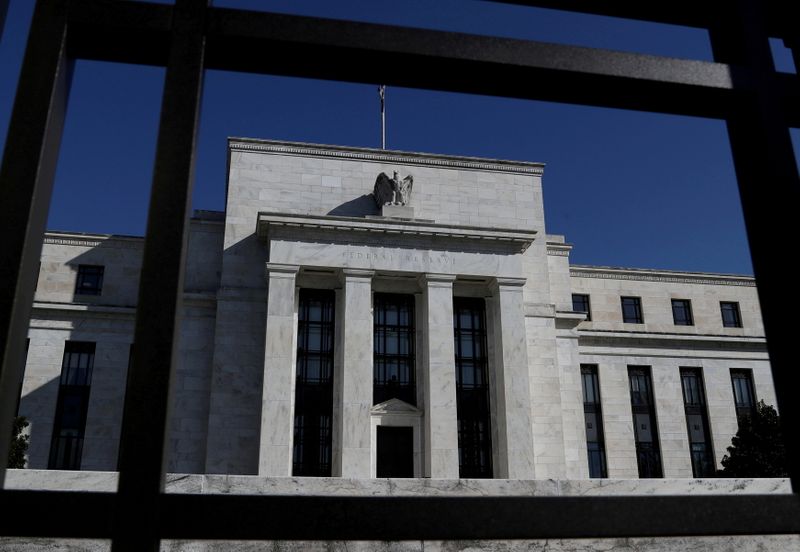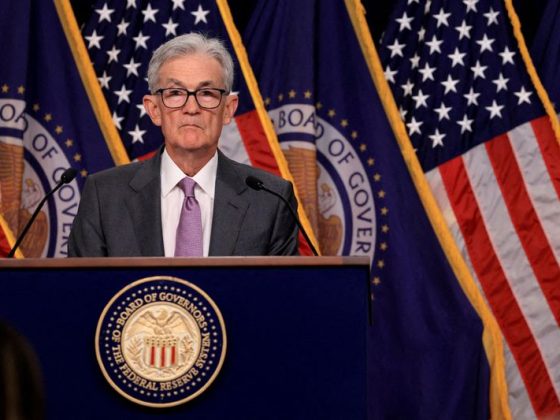
Investing.com — Recent economic data has not made a “compelling case” for a super-sized interest rate reduction at the conclusion of the Federal Reserve’s latest two-day policy meeting this week, according to analysts at Standard Chartered (OTC:SCBFF).
With markets pricing in the beginning of an easing cycle that will bring rates down from a 23-year high of 5.25% to 5.5%, investors’ focus has centered around the scope of September’s decision.
According to the CME Group’s (NASDAQ:CME) closely-monitored FedWatch Tool, the odds of a 50-basis point cut this week — rather than a more traditional 25-basis point drawdown — currently stand at 65%.
The probabilities were even heading into last weekend, but bets for a jumbo cut were bolstered by media reports suggesting that such a reduction was still an option. Former New York Fed President Bill Dudley has also argued that a bumper cut was needed because short-term interest rates are “far above” a neutral level that neither helps nor hinders economic activity.
Indications of waning activity could spur the Fed act more aggressively to help prop up the economy. Officials are currently weighing lingering stickiness in recent consumer price growth data, as well as figures pointing to a loosening in the American labor market.
Fed Chair Jerome Powell said in August that the “time has come” to adjust monetary policy due to potential “downside risks” facing the jobs picture.
Even still, the StanChart analysts said in a note to clients on Monday that they are maintaining their forecast for a 25-basis point cut this month accompanied by a “clear message” from the rate-setting Federal Open Market Committee that it is on the lookout for reasons to slash borrowing costs by 50 basis points in the future.
The analysts said they would only support a deeper 50-basis point reduction in September if “all incoming labor and activity data were as clearly negative” as a gradual increase in the US unemployment rate throughout 2024. In August, the jobless rate in the world’s largest economy was at 4.2%, up from 3.7% in January.
“[T]he [unemployment rate] is isolated in showing an alarming deterioration,” the analysts said.
The StanChart analysts added that a half-point cut will not make sense until the the core personal consumption expenditures index — one of the Fed’s preferred measures of inflation that strips out volatile items like food and fuel — decelerates closer to 2% on an annualized basis. The figure stood at 2.6% in July, matching the pace of the prior month.
They also dismissed concerns that a shallower 25-basis point drawdown could dent asset markets, saying it is unlikely that trading conditions are “so fragile that a message of ‘not quite yet’ on a 50-basis point cut would lead to extended disappointment.”
Finally, they warned that a 50-basis point cut in September would dampen the impact of a more aggressive reduction later this year should labor demand weaken further.
“Starting the cutting cycle with 50 [basis points] will probably add to market pricing that is already aggressive on the easing side. There will be more subsequent confusion and market disruption if the unemployment rate remains in the low 4s and core PCE is flat,” the analysts said.


